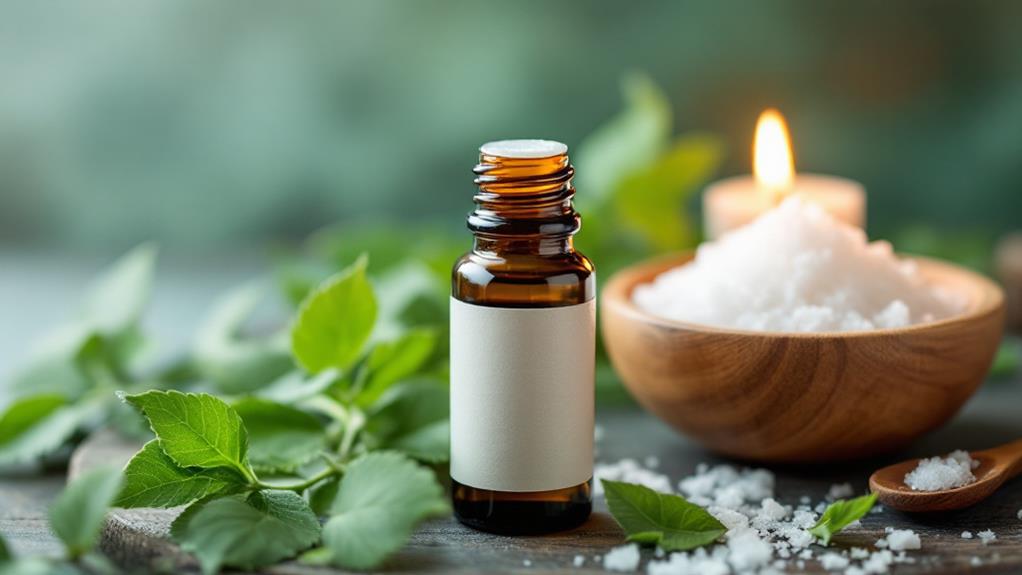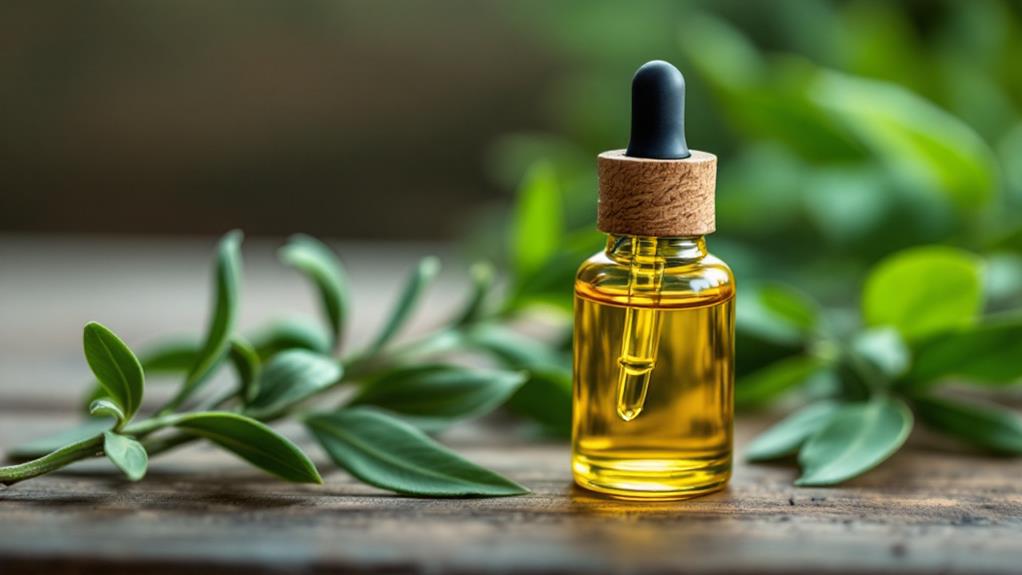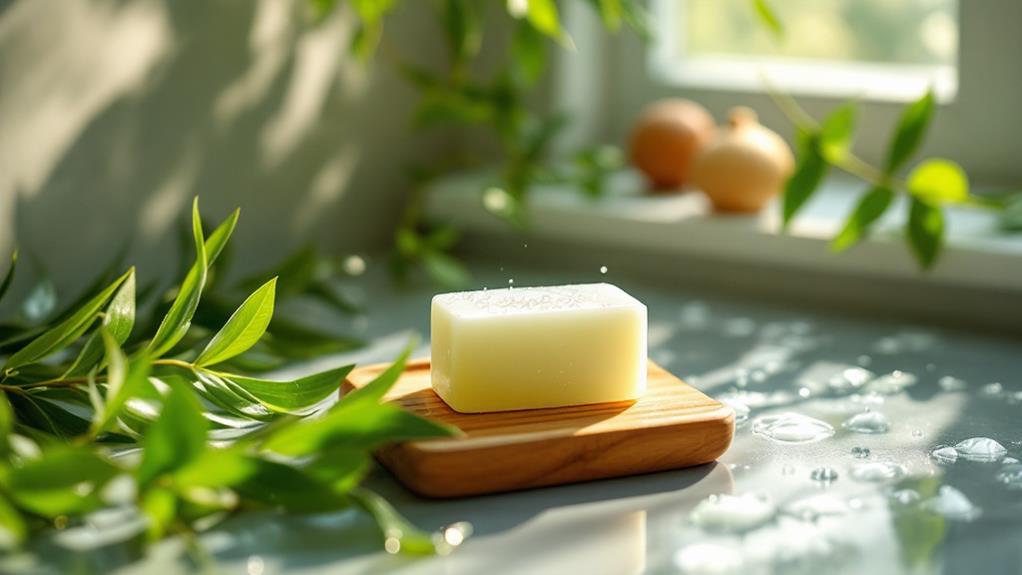What Is Nail Psoriasis and Can Tea Tree Oil Help? A Natural Approach
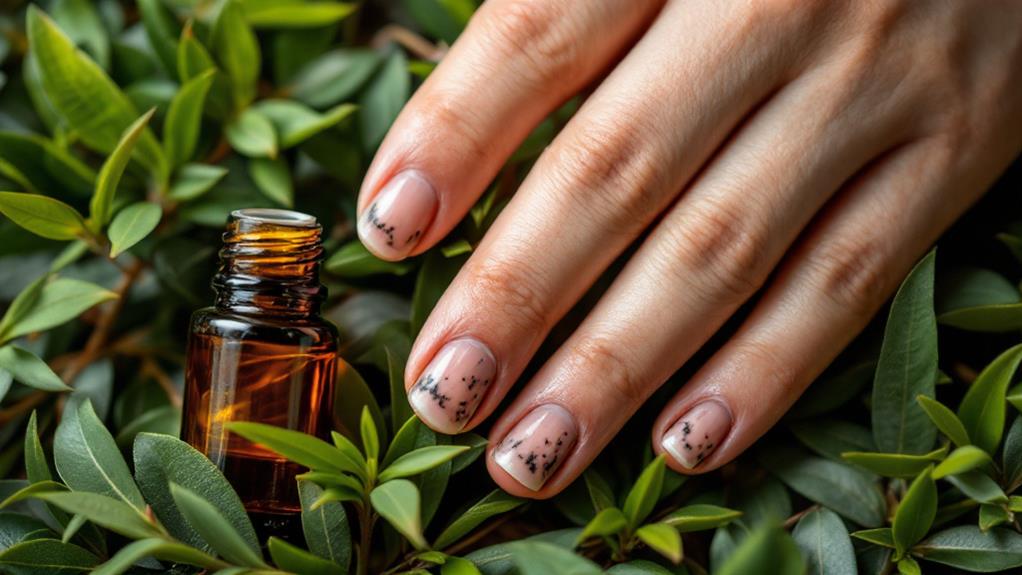
Nail psoriasis is an autoimmune condition that changes nails' growth and appearance, affecting half of those with psoriasis. You'll notice symptoms like pitting, discoloration, and nail thickening. It's uncomfortable and can hurt, impacting your daily life. Stress and injuries often trigger flare-ups. Tea tree oil might help naturally with its antibacterial and anti-inflammatory properties. It fights infections and reduces inflammation while supporting healthier nail growth. Remember to dilute it before use and conduct a patch test for allergies. Interested in more details on managing nail psoriasis naturally? There's plenty more to uncover about this approach.
Understanding Nail Psoriasis
Nail psoriasis is a prevalent condition that greatly impacts individuals' quality of life, affecting about half of those with psoriasis. As an autoimmune condition, it alters the growth and appearance of your nails. You might notice symptoms like pitting, ridges, and discoloration, often leading to nail thickening and even separation from the nail bed. These changes can be painful and uncomfortable, as well as the visual impact they have.
Managing nail psoriasis can be challenging, especially since stress, trauma, and nail infections are common triggers for flare-ups. Understanding these triggers is essential for effective management. While antifungal treatments won't work because nail psoriasis isn't caused by an infection, considering alternative remedies like tea tree oil might be beneficial. Tea tree oil has natural antibacterial and anti-inflammatory properties, which could help manage symptoms and prevent nail infections, although more research is needed to confirm its efficacy.
Effective management involves more than just treatment; it's about minimizing stress and protecting your nails from trauma. By doing so, you can reduce the frequency and severity of flare-ups, making it easier to maintain your quality of life despite this challenging condition.
Symptoms and Triggers
When dealing with nail psoriasis, recognizing its symptoms and triggers is key to effective management. You might notice symptoms like pitting, discoloration, thickening, and even separation of the nail from the nail bed. These nail changes can cause discomfort and lead to cosmetic concerns. For those with psoriatic arthritis, nail involvement is common, affecting up to 80% of patients. Understanding these symptoms helps you address them promptly, reducing the risk of psoriasis flares.
Various triggers can exacerbate nail psoriasis, making it crucial to identify and manage them. Stress is a significant trigger, so finding ways to reduce it can help minimize symptoms. Infections and skin injuries can also lead to flare-ups, emphasizing the importance of maintaining good nail care. Furthermore, certain medications might worsen your condition, so discussing alternatives with your healthcare provider is a wise step.
Environmental factors, like fluctuations in temperature and humidity, and trauma to the nails can further contribute to the worsening of nail psoriasis. By adopting a natural approach, you can focus on gentle nail care routines and stress management techniques to help keep your symptoms under control and improve your general quality of life.
Benefits of Tea Tree Oil
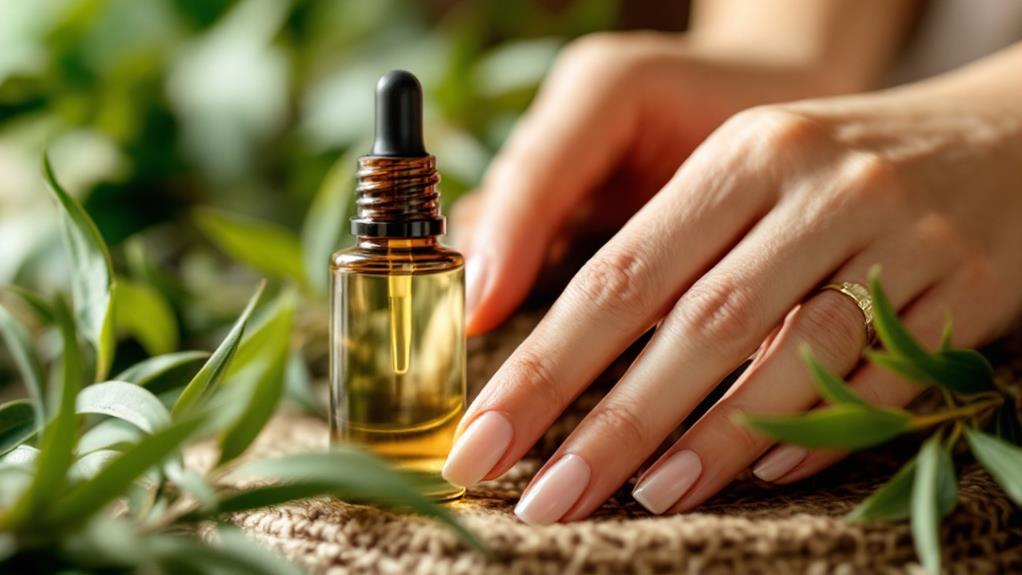
Tea tree oil stands out as a natural remedy with several benefits for managing nail psoriasis. Its impressive antibacterial properties can help alleviate the symptoms by preventing any bacterial infections that may arise due to compromised nail health. But that's not all. The oil's anti-inflammatory characteristics work wonders in reducing the redness and swelling often associated with nail psoriasis, providing much-needed relief.
Here's how tea tree oil can support your nail health:
- Moisture Levels: By regulating sebum production, tea tree oil maintains ideal moisture levels, preventing the dryness and irritation that can exacerbate nail psoriasis.
- Dead Skin Cells: This natural remedy aids in exfoliating dead skin cells from the nail surface, which is essential for promoting healthier nail growth and ensuring your nails look their best.
- Itchiness and Discomfort: The soothing effect of tea tree oil can greatly minimize itchiness and discomfort, making it a go-to for those dealing with ongoing irritation.
Additionally, thanks to its antifungal properties, tea tree oil is effective in addressing secondary fungal infections that might develop due to nail psoriasis. Embracing these natural remedies could be a game-changer for your nail care routine.
How to Use Tea Tree Oil
Understanding how to incorporate tea tree oil into your routine can improve its benefits for managing nail psoriasis. Start by conducting a patch test to verify you don't have any allergic reactions. Once you're in the clear, dilute tea tree oil with a carrier oil like coconut or almond oil. A safe ratio is one part tea tree oil to ten parts carrier oil. This diluted tea tree oil should then be applied directly to the nail psoriasis patches and the surrounding skin. Confirm you use enough of the mixture to cover the area thoroughly, providing maximum effectiveness.
For those dealing with scalp psoriasis, tea tree oil can be a useful supplement to your regular shampoo. Simply mix it in and apply during your wash, leaving it on for 10-15 minutes before rinsing. This can improve the soothing effects on your scalp, providing relief from irritation.
Precautions and Risks
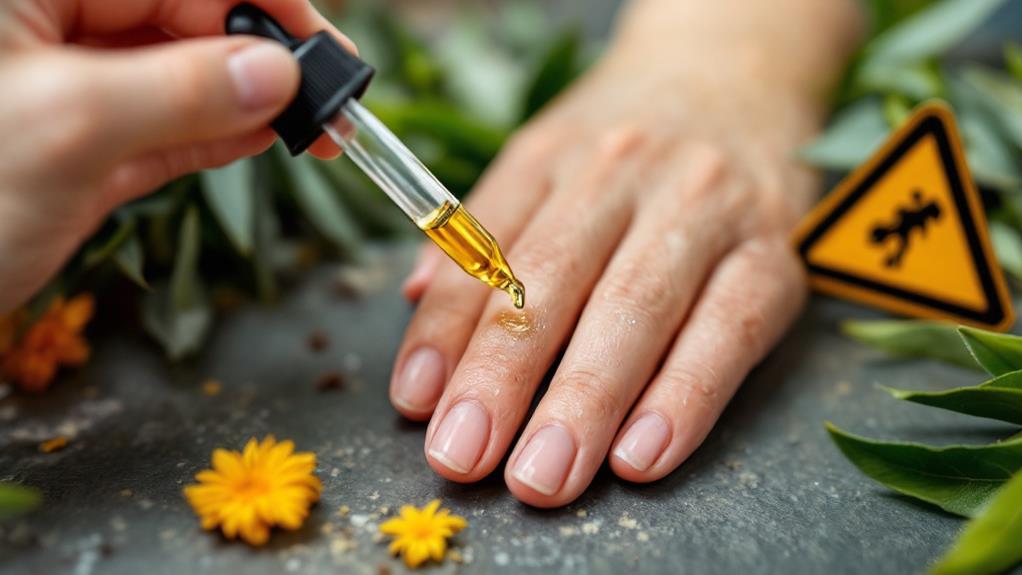
Did you know that using tea tree oil for nail psoriasis comes with certain precautions and risks? It's vital to be aware of these before starting any treatment. Initially, always conduct a patch test to check for any allergic reactions. Applying undiluted tea tree oil can lead to skin burns or irritation, especially for those with sensitive skin. Moreover, if you're pregnant or breastfeeding, be extra cautious. Hormonal changes can make your skin more sensitive, increasing the potential risks to both you and your baby. Always consult with a healthcare provider before using tea tree oil during these times.
Here's a quick list to guide you:
- Patch Test: Always do this to avoid allergic reactions like redness or itching.
- Pregnant/Breastfeeding Women: Consult a doctor due to increased skin sensitivity.
- Pets: Keep tea tree oil away from them, as it's toxic and can cause harm if ingested or contacted.
Exploring Alternative Remedies
When dealing with nail psoriasis, considering alternative remedies can be advantageous alongside conventional treatments. One such option is tea tree oil, revered for its antifungal and anti-inflammatory properties. By incorporating this natural oil into your routine, you might find relief from symptoms like pitting, ridging, and discoloration that often accompany nail psoriasis. Tea tree oil can promote nail health by reducing inflammation and supporting overall nail care.
Before jumping into use, it's essential to do a patch test. This step helps you identify any potential allergic reactions, ensuring that tea tree oil is safe for your skin. Remember, even natural remedies can cause sensitivities.
Incorporating tea tree oil into your nail care routine doesn't mean neglecting good hygiene practices. Regular cleaning and moisturizing, paired with tea tree oil's benefits, can improve nail health. However, it's significant to view tea tree oil as a complement to, not a replacement for, conventional treatments prescribed by your healthcare provider.

